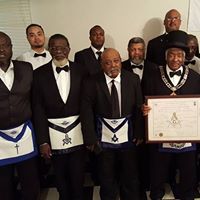Ronald E Plummer
age ~63
from Haslet, TX
- Also known as:
-
- Ronald Edwin Plummer
- Ron E Plummer
- Phone and address:
-
14161 Gold Seeker Way, Haslet, TX 76052
9403891167
Ronald Plummer Phones & Addresses
- 14161 Gold Seeker Way, Haslet, TX 76052 • 9403891167
- 506 Church St, Decatur, TX 76234 • 9406272245
- Burkburnett, TX
- Hereford, TX
- Wichita, KS
- 506 N Church St, Decatur, TX 76234 • 9406834810
Work
-
Position:Technicians and Related Support Occupations
Education
-
Degree:High school graduate or higher
Resumes

Senior Mechanical Staff Engineer, Medical
view sourceLocation:
14161 Gold Seeker Way, Haslet, TX 76052
Industry:
Mechanical Or Industrial Engineering
Work:
Flextronics
Senior Mechanical Staff Engineer, Medical
Pci Industries, Inc. 2011 - 2016
Contract Design Engineer
Crash Rescue Equipment Service, Inc. 2009 - 2011
Director of Engineering
Ronald Plummer Contracting 2009 - 2011
Owner and Self Employed
Poco Graphite, An Entegris Company 1994 - 2006
Mechanical Engineer
Senior Mechanical Staff Engineer, Medical
Pci Industries, Inc. 2011 - 2016
Contract Design Engineer
Crash Rescue Equipment Service, Inc. 2009 - 2011
Director of Engineering
Ronald Plummer Contracting 2009 - 2011
Owner and Self Employed
Poco Graphite, An Entegris Company 1994 - 2006
Mechanical Engineer
Education:
Hereford High School
Texas A&M University
Bachelor of Science In Mechanical Engineering, Bachelors, Mechanical Engineering
Texas A&M University
Bachelor of Science In Mechanical Engineering, Bachelors, Mechanical Engineering
Skills:
Engineering
Mechanical Engineering
Finite Element Analysis
Manufacturing
Machining
Product Development
Solidworks
Design For Manufacturing
Engineering Management
Continuous Improvement
Lean Manufacturing
Engineering Design
Hydraulics
Root Cause Analysis
Pumps
Aerospace
Welding
Mechanical Engineering
Finite Element Analysis
Manufacturing
Machining
Product Development
Solidworks
Design For Manufacturing
Engineering Management
Continuous Improvement
Lean Manufacturing
Engineering Design
Hydraulics
Root Cause Analysis
Pumps
Aerospace
Welding

Ronald Plummer
view source
Ronald Plummer
view source
Ronald Plummer
view source
Ronald Plummer
view source
Ronald Plummer
view source
Ronald Plummer
view source
Ronald Plummer
view sourceUs Patents
-
System, Method, And Apparatus For Dual Gas Delivery Through A High Temperature Artifact Without Undesirable Gas Mixing
view source -
US Patent:7258137, Aug 21, 2007
-
Filed:Dec 7, 2004
-
Appl. No.:11/005994
-
Inventors:Ronald E. Plummer - Decatur TX, US
-
Assignee:Poco Graphite, Inc. - Decatur TX
-
International Classification:F02G 1/00
-
US Classification:13759903, 137896, 366336, 366340
-
Abstract:A system conveys two gases separately until controlled delivery and gas mixing are desired. The device maintains separation between the two gases with sealed, high temperature materials, and a geometry that contains gas flow channels that do not allow gas mixing. The present design provides a seal at the interfaces between components. An outer ring and an inner spool are assembled together to form a single component that accommodates the input of two, initially separate gases, and then contains and conveys the two gases separately to an exit surface where outlet holes allow the two gases to mix and react in a controlled manner upon exiting the component. The inlet holes for both gases are located on one side of the spool. The exit holes are formed in a centralized, alternating, completely interspersed array or grid-like pattern on the opposite surface of the spool.
-
System, Method, And Apparatus For Conversion Bonding Of Precursor Subcomponents Into A Unitary Monolith
view source -
US Patent:7931853, Apr 26, 2011
-
Filed:Nov 9, 2007
-
Appl. No.:11/937626
-
Inventors:Ronald E. Plummer - Decatur TX, US
-
Assignee:Poco Graphite, Inc. - Decatur TX
-
International Classification:B32B 18/00
-
US Classification:264646, 264 82, 264682, 423345, 423346, 423448
-
Abstract:A process for converting precursor objects into a unitary ceramic object produces, for example, a ceramic, optical scan mirror that is formed from at least two pieces. An optical section has at least one optical surface and at least one attachment surface, and a support section has at least one attachment surface and preferably has a mounting area. The optical and support sections are formed as separate pieces from a precursor material, such as graphite, such that a selected support section can receive any of a plurality of optical sections having different sizes, shapes, or orientations. To form the mirror, the attachment surfaces are placed adjacent each other, and then the sections are converted simultaneously to a ceramic material, such as silicon carbide, to form a monolithic scan mirror.
-
System, Method, And Apparatus For Conversion Bonding Of Precursor Subcomponents Into A Unitary Monolith
view source -
US Patent:20070103756, May 10, 2007
-
Filed:Nov 8, 2005
-
Appl. No.:11/269341
-
Inventors:Ronald Plummer - Decatur TX, US
-
International Classification:G02B 26/08
-
US Classification:359212000
-
Abstract:A process for converting precursor objects into a unitary ceramic object produces, for example, a ceramic, optical scan mirror that is formed from at least two pieces. An optical section has at least one optical surface and at least one attachment surface, and a support section has at least one attachment surface and preferably has a mounting area. The optical and support sections are formed as separate pieces from a precursor material, such as graphite, such that a selected support section can receive any of a plurality of optical sections having different sizes, shapes, or orientations. To form the mirror, the attachment surfaces are placed adjacent each other, and then the sections are converted simultaneously to a ceramic material, such as silicon carbide, to form a monolithic scan mirror.
-
Vertical Semiconductor Wafer Carrier With Slats
view source -
US Patent:60996455, Aug 8, 2000
-
Filed:Jul 9, 1999
-
Appl. No.:9/350389
-
Inventors:Micheal E. Easley - Perrin TX
Ronald E. Plummer - Decatur TX -
Assignee:Union Oil Company of California - El Segundo CA
-
International Classification:C23C 1600
-
US Classification:118500
-
Abstract:An apparatus for holding a plurality of semiconductor wafers during heat treatment of the wafers in a furnace, which apparatus comprises a plurality of support members or rails extending essentially vertically between a top and bottom plate. At least two of the support members are located toward the front of the carrier where the wafers are inserted, and at least one support member is located toward the back of the carrier. A first plurality of slats is attached to one of the front support members and to a back support member such that the space between the top surface of one slat and the bottom surface of the next higher adjacent slat forms a slot for receiving a portion of a semiconductor wafer. A second plurality of slats is attached to another front support member and to a back support member to form corresponding slots on another side of the carrier for receiving another portion of a semiconductor wafer. Preferably, each slat contains at least one raised structure which is used to support the underside of a semiconductor wafer.
-
Pitch Training Device With Adjusted Center Of Mass
view source -
US Patent:20220379186, Dec 1, 2022
-
Filed:May 25, 2022
-
Appl. No.:17/824541
-
Inventors:Michael Z. MCGUINESS - Rockville MD, US
Connor Zukel MCGUINESS - Los Angeles CA, US
Ronald Edwin PLUMMER - Haslet TX, US -
International Classification:A63B 69/00
A63B 43/00 -
Abstract:A device for training a person to throw a ball includes a body. The body defines a first planar surface, a second planar surface, and a curved surface. The first planar surface is defined at a first end of the body. The second planar surface is defined at a second end of the body. The curved surface is defined between the first planar surface and second planar surface. The device has a center of mass that is located outside of the geometric center of the device.
-
Pitch Training Device With Clear Spherical Caps
view source -
US Patent:20220379187, Dec 1, 2022
-
Filed:May 25, 2022
-
Appl. No.:17/824549
-
Inventors:Michael Z. MCGUINESS - Rockville MD, US
Connor Zukel MCGUINESS - Los Angeles CA, US
Ronald Edwin PLUMMER - Haslet TX, US -
International Classification:A63B 69/00
-
Abstract:A pitch training ball includes a center portion, a first cap, and a second cap. The center portion is opaque and has a first planar surface at a first end thereof, and a second planar surface at a second end thereof opposite to the first end. The first cap portion has a first base that is adjacent to the first planar surface. The second cap portion has a second that is adjacent to the second planar surface. The first cap, the center portion, and the second cap cooperate to define a baseball shape. The first and second caps are transparent to translucent.
Googleplus

Ronald Plummer

Ronald Plummer

Ronald Plummer
view source
Ronald Plummer
view source
Ronald Plummer
view source
Ronald D. Plummer Jr.
view source
Ronald Plummer
view sourceClassmates

Ronald Plummer
view sourceSchools:
Our Lady of Mt. Carmel St. Benedicta School Staten Island NY 1997-2001
Community:
Gloria Vanvalen, Paul Jamrogiewicz, Theresa Tammone, David Washington

Ronald Plummer
view sourceSchools:
Our Lady of Mt. Carmel St. Benedicta School Staten Island NY 1997-2001
Community:
Gloria Vanvalen, Paul Jamrogiewicz, Theresa Tammone, David Washington

Ronald Plummer
view sourceSchools:
Greater Johnstown Voc-Tech High School Johnstown PA 1977-1981
Community:
Missy Robine, Roger Mcclelland

Ronald Plummer
view sourceSchools:
Osmond A. Church Public School 124 South Ozone Park NY 1957-1963, Robert Goddard Junior High School 202 Ozone Park NY 1963-1965
Community:
Donald Waller, Bella Macias

Ronald Plummer
view sourceSchools:
Maple Creek Composite High School Maple Creek Afghanistan 1976-1980
Community:
Jeanne Christie, Ann Boneham, Don Burrows

Ronald Plummer
view sourceSchools:
Chelsea High School Chelsea OK 1980-1984
Community:
Lisa Tedlock, Cindy Rowley, Walter Noveska, Gina Parks

ronald plummer | Greater ...
view source
Ronald Plummer | Westbroo...
view sourceYoutube
Myspace
Flickr
Get Report for Ronald E Plummer from Haslet, TX, age ~63















